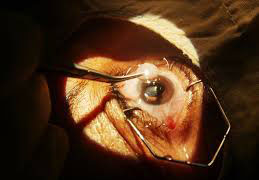Cataract Surgery

Cataract ?
A cataract is an opacity (or cloudiness) in the lens of the eye. This restricts light passing through the eye and reaching the retina. When this occurs, vision is affected.
What Is An IOL ?
An Intraocular Lens (IOL) is the replacement lens that is surgically implanted in the eye to replace the existing natural clouded lens during cataract surgery.
Types Of IOL
The design of IOL decides your need for spectacles after the surgery. Newer advanced IOL (Toric, Multifical and Accomodative) can treat cataract and get rid of spectacle power too.
Monofocal IOL
A standard mono-focal IOL has one point of focus, which is usually distance vision. If you choose standard IOLs, you will generally need glasses for near activities like reading. On the other hand, if your mono-focal IOLs are focused on near vision, you would need glasses to see distant objects clearly.
Toric IOL
Astigmatism means that your eye is shaped more like and egg than a round ball. This irregular shape causes blurry vision.20% cataract cases have astigmatism, which requires them to wear cylindrical powered glasses after the cataract surgery with monofocal lenses. The toric lens is a special form of a single vision cataract lens that has astigmatism correction built right into the lens implant. If you like the idea of a single vision intraocular lens and have astigmatism, then a toric lens would be a great choice for you. A toric lens that corrects your astigmatism inside the eye does a better job of correcting your vision than a pair of glasses that sit out away from your face.
Multifocal IOL
As against monofocal IOL, which focuses at only single distance; A multi-focal IOL contains multiple zones that focus light at a variety of distances, allowing you to see a continuous range of vision without glasses. This results in excellent visual acuity of close up and far away objects. Many patients report the ability to read small print and see distances, both without glasses. This lens can however, produce rings or halos around bright lights and may make it difficult to see in low light situations, such as driving at night. While most patients adapt to this effect over a period of several months.



